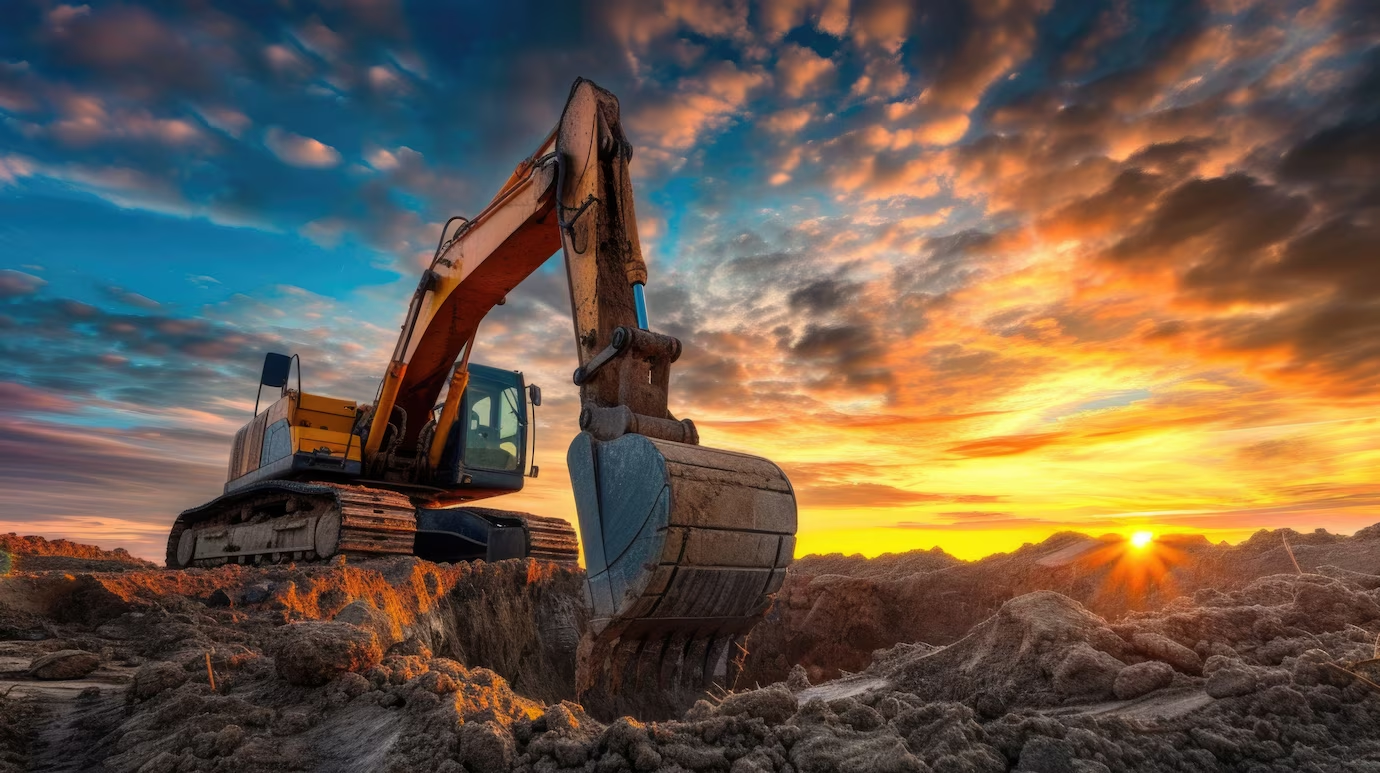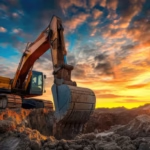Excavation is a critical process in construction, especially for laying the foundation of buildings, roads, bridges, and other infrastructure. However, excavation work can be hazardous if we do not follow proper safety protocols. Excavation and backfilling require specialized knowledge and careful attention to safety to avoid accidents, injuries, or even fatalities. As a leading construction company in Saudi Arabia, it is imperative to follow industry best practices when undertaking excavation and backfilling projects.
This blog will cover the best excavation safety practices to implement on construction sites, ensuring a safer working environment for construction teams. Whether you’re an excavation and backfilling contractor in Saudi Arabia or a project manager overseeing construction, understanding these safety guidelines is crucial to maintaining a secure and efficient worksite.
Understanding Excavation and Backfilling
Before diving into excavation safety practices, it’s important to define what excavation and backfilling involve. Excavation refers to the process of removing soil, rock, or other materials to create space for construction. Backfilling, on the other hand, is the process of refilling the excavated space with material, often soil or gravel, to provide support for the structure above.

Together, these processes are fundamental to the foundation work of any construction project. Improper handling of excavation and backfilling can lead to serious issues, including structural damage, collapse, or even fatal accidents. As one of the top excavation & backfilling contractors in Saudi Arabia, maintaining safety during these operations is of paramount importance.
Excavation Hazards and Risks
The excavation process is fraught with potential hazards. Understanding these risks is essential to implementing effective safety measures. Some of the common excavation hazards include:
1. Cave-ins and Collapses
The most significant risk in excavation work is the possibility of cave-ins. When the walls of an excavation site collapse, heavy debris can trap workers. This is a leading cause of fatalities in the construction industry, especially in deep excavations.
2. Falling Materials
Heavy equipment and tools, as well as excavated material, can fall into the excavation pit. The falling objects may injure workers.
3. Utility Strikes
Excavation work may disturb underground utilities, such as water, gas, or electrical lines. Striking these utilities can cause severe damage, disrupt services, and pose serious safety risks to workers and the general public.
4. Hazardous Atmospheres
Excavated areas, especially deep trenches or pits, can sometimes lead to the accumulation of dangerous gases or chemicals. These hazardous atmospheres can put workers at risk of suffocation, poisoning, or explosions.
5. Equipment Accidents
Heavy machinery, such as excavators and backhoes, pose risks if not operated correctly. Malfunctions or improper use of equipment can lead to accidents, injuries, and fatalities.
Best Practices for Excavation Safety
To mitigate these risks, excavation and backfilling contractors must adhere to safety best practices throughout the entire process. Below are key safety measures to follow to ensure a secure excavation site.
1. Conduct a Site Assessment and Risk Analysis
Before starting any excavation work, you must conduct a thorough site assessment. This includes identifying underground utilities, determining soil conditions, and analyzing potential risks in the area. You should perform a comprehensive risk analysis to determine the proper excavation methods and safety protocols.
2. Design a Safe Excavation Plan
A well-designed excavation plan is essential for safety. The plan should outline the excavation method, the type of equipment to use, the excavation depth, and the necessary protective systems (such as shoring or shielding). By planning carefully, you ensure that all potential hazards are addressed, minimizing the risk of accidents during excavation.
3. Use Proper Shoring and Shielding Techniques
Shoring and shielding prevent excavation walls from collapsing. Shoring supports the walls with props or braces, while shielding uses barriers to protect workers from falling debris.
For deeper excavations, shoring is crucial to prevent cave-ins. OSHA regulations specify that trenches deeper than five feet must have protective systems in place, such as trench boxes, trench shields, or sloping.
4. Maintain Clear Signage and Barricades
Clearly mark the excavation area with appropriate signage and barriers to keep unauthorized personnel out. Set up barricades around the excavation site’s perimeter to prevent accidents. Using reflective tape or warning lights also helps make the site more visible to workers and passing vehicles.
5. Monitor Weather Conditions
Extreme weather conditions can significantly impact excavation safety. Heavy rainfall or high winds can weaken excavation walls and increase the risk of collapse. Always monitor weather forecasts and suspend work if hazardous conditions are expected. A construction company in Saudi Arabia must be especially cautious of extreme heat or rain, both of which are common in the region.
6. Provide Worker Safety Training
All workers involved in excavation and backfilling activities should undergo proper safety training. This training should cover topics like trench safety, recognizing hazards, proper use of equipment, and emergency response protocols. Ensuring that everyone on the team is well-versed in excavation safety is crucial for preventing accidents on-site.
7. Conduct Regular Inspections
Continuous inspections are necessary to ensure that excavation safety practices are being followed. Supervisors should perform daily checks of the excavation site, looking for any signs of instability or potential hazards. Inspecting equipment and protective systems, such as shoring, ensures they are functioning properly.
8. Use Appropriate Personal Protective Equipment (PPE)
Personal protective equipment (PPE) is essential to protecting workers from excavation hazards. Common PPE for excavation work includes hard hats, steel-toed boots, reflective vests, and gloves. Additionally, workers in deep trenches should wear fall protection gear and respirators if working in confined spaces with hazardous gases.
9. Maintain Proper Equipment and Machinery
Excavation work relies heavily on machinery such as backhoes, bulldozers, and excavators. Regular maintenance and inspections of these machines are essential to prevent equipment malfunctions that could lead to accidents. Excavation and backfilling contractors in Saudi Arabia should also ensure that their equipment operators are adequately trained and familiar with the machinery they use.
10. Implement Emergency Procedures
Despite taking every precaution, accidents can still happen. Establishing an emergency response plan is essential for mitigating the consequences of a workplace incident. This plan should include procedures for evacuating workers, providing first aid, contacting emergency services, and securing the site.
Excavation and Backfilling Contractors in Saudi Arabia
As one of the leading excavation & backfilling contractors in Saudi Arabia, LABTCO prioritizes safety at every stage of excavation and backfilling projects. We ensure compliance with industry standards and implement all necessary safety measures to protect workers and minimize risks. With years of experience, we are equipped to handle both large and small excavation projects, providing top-tier service to clients across the Kingdom.
Conclusion
Excavation and backfilling play a crucial role in every construction project, but they also involve significant risks that must be properly managed. By implementing excavation safety best practices, construction companies in Saudi Arabia can complete projects safely, protect workers, and maintain high-quality standards.
Whether you’re working on a residential, commercial, or industrial project, safety should always be your top priority. Partnering with experienced excavation and backfilling contractors in Saudi Arabia ensures that your excavation work is completed efficiently, safely, and to the highest standards. At LABTCO, we are committed to delivering safe, high-quality excavation services for all your construction needs.
Learn more about best construction companies in Saudi Arabia and their role in building secure and sustainable projects.
Discover why Excavation & backfilling contractors in Saudi Arabia are essential for successful construction projects.
By following these best practices, contractors and project managers can minimize excavation-related risks, ensuring that construction sites are safe for all involved. Proper planning, risk management, and worker training are essential in protecting both personnel and the integrity of the project.
Frequently Asked Questions (FAQs)
1. What are the main hazards associated with excavation work?
Excavation work poses several risks, including cave-ins, falling materials, utility strikes, hazardous atmospheres, and equipment accidents. It is crucial to implement safety measures such as shoring, shielding, and proper signage to mitigate these risks.
2. Why is shoring important in excavation work?
Shoring is essential for preventing cave-ins in excavations, especially for deeper trenches. It involves using props, braces, or other support systems to stabilize the walls of the excavation and protect workers from collapse.
3. How deep does an excavation need to be before requiring protective systems?
According to OSHA regulations, any trench deeper than 5 feet requires protective systems, such as trench boxes, trench shields, or shoring, to prevent cave-ins and safeguard workers.
4. What are the key steps to ensure excavation site safety?
Key steps include conducting a thorough site assessment, designing a safe excavation plan, using proper shoring and shielding, maintaining clear signage, monitoring weather conditions, providing safety training to workers, and conducting regular inspections of equipment and the excavation site.
5. How can weather conditions affect excavation safety?
Extreme weather conditions, such as heavy rainfall or high winds, can weaken excavation walls, increase the likelihood of cave-ins, or disrupt work schedules. Monitoring weather conditions is critical, and work should be suspended if hazardous weather is expected.
6. What is the role of PPE in excavation safety?
Personal Protective Equipment (PPE) is essential for protecting workers from the risks associated with excavation, such as falling objects and exposure to hazardous materials. Common PPE includes hard hats, reflective vests, steel-toed boots, gloves, and fall protection gear.
7. How often should excavation sites be inspected for safety?
Excavation sites should be inspected daily before work begins, during the project, and after any significant weather event. Supervisors should look for signs of instability, such as cracks in the soil, or any other hazards that could compromise worker safety.
8. How do excavation and backfilling contractors ensure safety compliance?
Excavation and backfilling contractors follow industry safety standards and regulations, provide adequate worker training, and implement safety measures like shoring, trench shields, and signage. They also conduct regular site inspections to ensure compliance with safety protocols.




